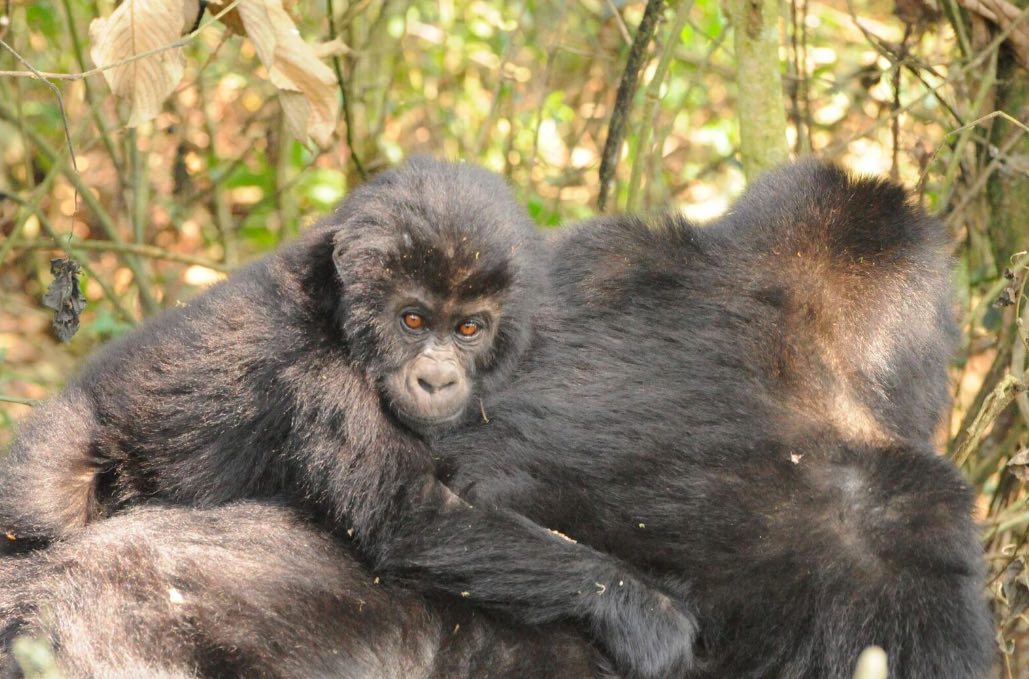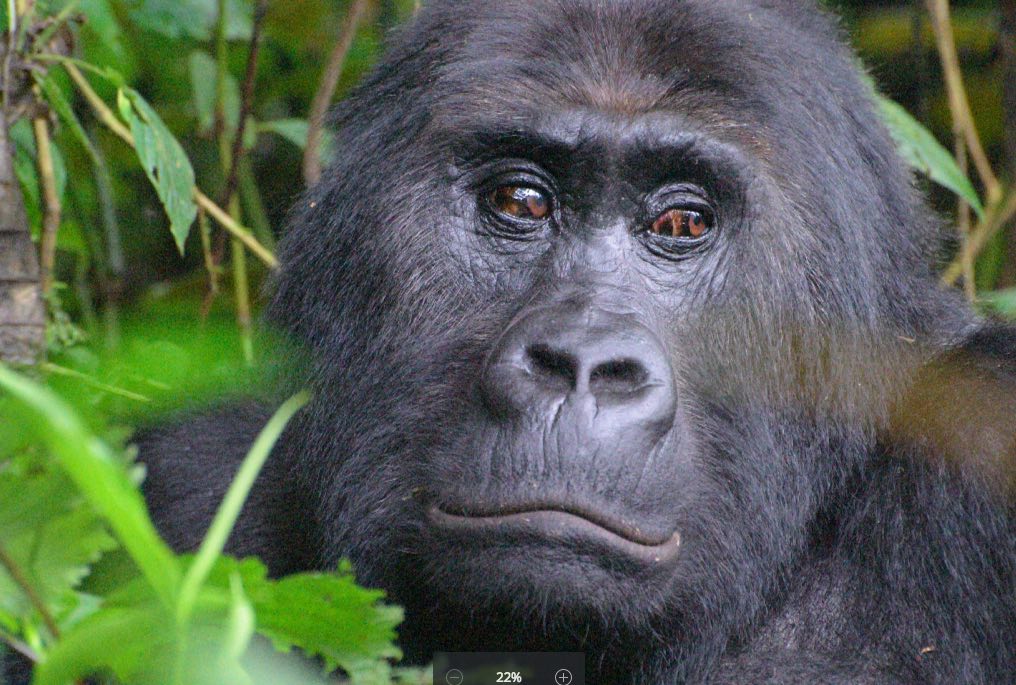- The change in the eastern lowland gorilla’s conservation status was announced yesterday at the ongoing IUCN World Conservation Congress in Hawaii.
- The revised listing of the Grauer’s gorilla is based on recent surveys by the Wildlife Conservation Society (WCS) and Fauna & Flora International (FFI), which showed that gorilla numbers in eastern DRC have declined by more than 77 percent in the last 20 years.
- Fewer than 3,800 individuals remain in the wild today, down from 16,900 individuals in 1994.
The world’s largest ape, the Grauer’s gorilla or the eastern lowland gorilla, is now on the verge of extinction.
The gorilla subspecies (Gorilla beringei graueri), found only in eastern Democratic Republic of Congo (DRC), has been up-listed to Critically Endangered on the IUCN Red List of Threatened Species. With this listing, all four gorilla subspecies — cross river gorilla, western lowland gorilla, Grauer’s gorilla and mountain gorilla — are now Critically Endangered. The other two great apes in Africa, Chimpanzee and Bonobo, are currently listed as Endangered.
The change in the eastern lowland gorilla’s conservation status was announced yesterday at the ongoing IUCN World Conservation Congress in Hawaii.
“We are grateful that IUCN and the Species Survival Commission Primate Specialist Group have accepted our recommendations to upgrade the listing of Grauer’s gorilla,” Andrew Plumptre, the lead author of the revised listing, said in a statement. “Critical Endangered status will raise the profile of this gorilla subspecies and bring attention to its plight. It has tended to be the neglected ape in Africa, despite being the largest ape in the World.”

The revised listing of the Grauer’s gorilla is based on recent surveys by the Wildlife Conservation Society (WCS) and Fauna & Flora International (FFI), which showed that gorilla numbers in eastern DRC have declined by more than 77 percent in the last 20 years. In some sites, their populations have reduced by over 94 percent. Fewer than 3,800 individuals remain in the wild today, down from 16,900 individuals in 1994.
“The survey results helped us to identify critical sites for the conservation of the remaining gorillas,” Richard Tshombe, WCS’s Country Director for DR Congo, said in the statement. “We have already started engaging communities in one area to protect the gorillas in the Punia Gorilla Reserve, and we continue to support their conservation in Kahuzi-Biega National Park. In addition, we helped establish the Itombwe Reserve in June 2016 which protects a second important population.”
The decline in Grauer’s gorilla is mainly driven by illegal hunting for meat, conservationists say. Armed groups that set up mining camps deep in the forests in eastern DRC resort to hunting gorillas for meat in the absence of agriculture. Civil unrest in the region has also increased deforestation and illegal hunting.
The Rwandan genocide of the 1990s, for example, led to the devastation of Grauer’s gorilla populations, John Robinson, a primatologist and chief conservation officer at the WCS, told the Guardian. Rwandan refugees moved into the protected areas of eastern DRC, where they resorted to various mining activities and turned to gorillas for bushmeat.
“To see the Eastern gorilla – one of our closest cousins – slide towards extinction is truly distressing,” Inger Andersen, IUCN Director General, said in a statement. “We live in a time of tremendous change and each IUCN Red List update makes us realize just how quickly the global extinction crisis is escalating. Conservation action does work and we have increasing evidence of it. It is our responsibility to enhance our efforts to turn the tide and protect the future of our planet.”
